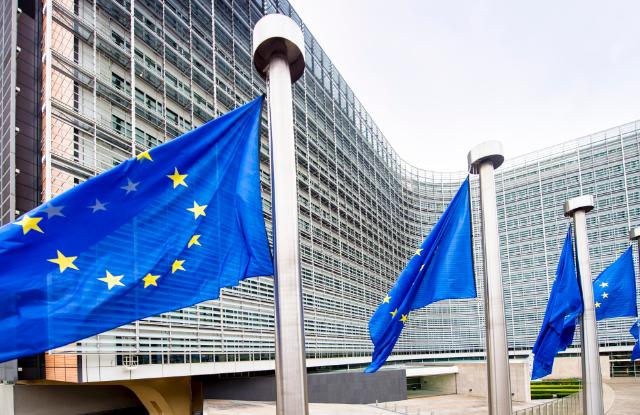The European Parliament is the only directly elected institution in the EU with important tasks in a carefully designed systems of checks and balances similar to that in the national democracies.
When citizens across the EU member states are voting in the European Elections during 6 – 9 June they will be electing representatives to a Parliament with a say on EU legislation, the EU budget and EU’s international relations. The latest Eurobarometer before the elections showed that a majority of the respondents are satisfied with the way democracy works in the EU.
But respondents also associated the EU with remoteness and bureaucracy. In one crucial aspect, the European Parliament differs from national parliaments. In legislative matters, it acts as co-legislator and adopts new laws together with the Council of Europe based on proposals from the European Commission. Contrary to national parliaments, it cannot initiate and pass laws on its own.
The representative democracy, which elects representatives in parliaments acting on behalf of the people, grew out from the direct democracy in ancient times when there was enough room for people with citizen rights to assemble in city squares and vote on common affairs. But this gave also rise to a democratic deficit which is perhaps mostly felt in the EU.
A way of addressing the deficit was the introduction of European Citizens’ Initiatives (ECI) in 2012. It can be described as a bridge between direct and representative democracy, giving citizens a voice between elections and a possibility to influence legislative decision-making in the EU.
Until now, 112 initiatives have been registered by the Commission but only few of them have been successful and passed the hurdles in the process. 23 of them were rejected because the proposals did not fall within the Commission’s remit. In principle, what it takes to make the Commission propose new legislation is to collect at least 1 million signatures in at least seven EU countries.
How the ECI works
As reported by The Brussels Times, the leading Belgian candidates to the European Parliament represent a range of political views and priorities. Some of them mentioned the need to strengthen European democracy and promote and simplify European Citizens’ Initiatives. A complementary participatory tool is Citizens Panels, which were introduced during the Conference on the Future of Europe. They give also citizens a say on what they expect from the EU but are not binding.
Judging by the Commission’s own description, the process from the registration of a ECI to a legislative proposal by the Commission is long. Before formal registration, the Commission needs to assess the initiative whether it meets the legal requirements and is eligible for registration. After that, the organisers have six months to start the collection of signatures.
If the organisers manage to collect one million statements of support within 12 months with the minimum thresholds reached in at least seven different member states, they must submit the collected statements of support for verification in the member states. Member states have then three months to verify the signatures.
After that, the Commission has to act again. Within one month, it will receive the organisers to allow them to explain in detail the matters raised by the initiative. Within three months, a public hearing will be organised at the European Parliament allowing the organisers to present their initiative.
After the hearing, and within six months, the Commission is obliged to set out its legal and political conclusions on the citizens’ initiative in a Communication. Where the Commission intends to propose the adoption or revision of legislation, the communication shall also set out the envisaged timeline for these actions.
The case of ending the cage age
One would think that coming to the end of this process, the organisers can breathe a sigh of relief and expect that the way to a legislative proposal is guaranteed. Unfortunately, not, as happened with the ECI ‘End of cage age’. The initiative collected ca 1,4 million signatures and called on the EU to revise a Council directive and phase out the use of cages in EU animal farming by 2027.
According to the Commission’s own version of the sequence of events, the initiative was submitted on 2 October 2020 after the successful collection of signatures. The meeting with the Commissioners concerned took place on 30 October 2020. The Public hearing in the European Parliament took place on 15 April 2021. The initiative was debated in a plenary session on 10 June 2021. The Parliament expressed its support for the initiative.
Most crucially, the Commission adopted a Communication on 30 June 2021 setting out the actions it intends to take in response to the initiative 'End the Cage Age’. In its response, the Commission wrote that it intended to table, by the end of 2023, a legislative proposal to phase out, and finally prohibit, the use of cage systems for all animals mentioned in the Initiative.
Since then, the Commission changed its mind and all went wrong. No legislative proposal on banning cages was included in the package of revised animal welfare legislation which was presented by the Commission. Animal welfare NGOs put the blame on aggressive Agri lobbying. The Commission claims that it has to complete the impact assessment, especially of the transition period, and that work is on-going.
Whatever the reasons, the Citizens Committee behind the initiative had enough and filed a complaint to the European Commission in November last year on alleged mismanagement and a breach of commitment by the Commission.
After starting the inquiry, the Ombudsman decided recently to close the inquiry after learning that the Citizens Committee had decided to take legal action before the General Court, as it is prevented to conduct inquiries in cases that are subject to legal proceedings. The Committee believed that the complaint was not going to lead anywhere and decided to take the legal route as a court ruling carries more weight.
The way forward
Asked by The Brussels Times if the ECI can be further simplified, Dr Dominik Hierlemann, a senior adviser on democracy and cohesion at the Bertelsmann Foundation, replied that simplification and user-friendliness are not the issue.
“What the ECI needs is success stories. For that it needs more visibility among the European public but also among civil society. The ECI is up until now the most used citizen participatory tool on European level. But it has not fulfilled the initial hopes. Making it constantly better in a technocratic sense is nice but will ultimately neither change its character nor its actual influence.”
Should instruments similar to the ECI be developed in the EU member states? "The ECI is a so-called agenda-setting instrument,” he replied.
“It can help citizens to bring topics into the political agenda but there are a few member states that have these instruments in place. It depends on political culture and institutional set-up if they decide whether the instruments make sense. In my opinion, if they work well, they offer the chance to connect citizens and the political sphere better. As for all participatory tools, visibility and impact are key."
Do you expect that the Citizen Panel instrument used in the Conference on the Future of Europe (CoFoE) will be further developed or will it be applied as now alongside the ECI?
“It’s good news that the European Commission has been a strong supporter of citizen panels since the CoFoE,” he replied. “There is also a recommendation to member states to use more innovative citizen participation instruments. Therefore, citizen panels might have become a constant feature of European politics.”
“Still, they are – and are perceived – an instrument solely of the European Commission. What is needed is a joint approach of the European institutions. Citizen panels need to be further developed with regard to methodology and follow-up.”
M. Apelblat
The Brussels Times

